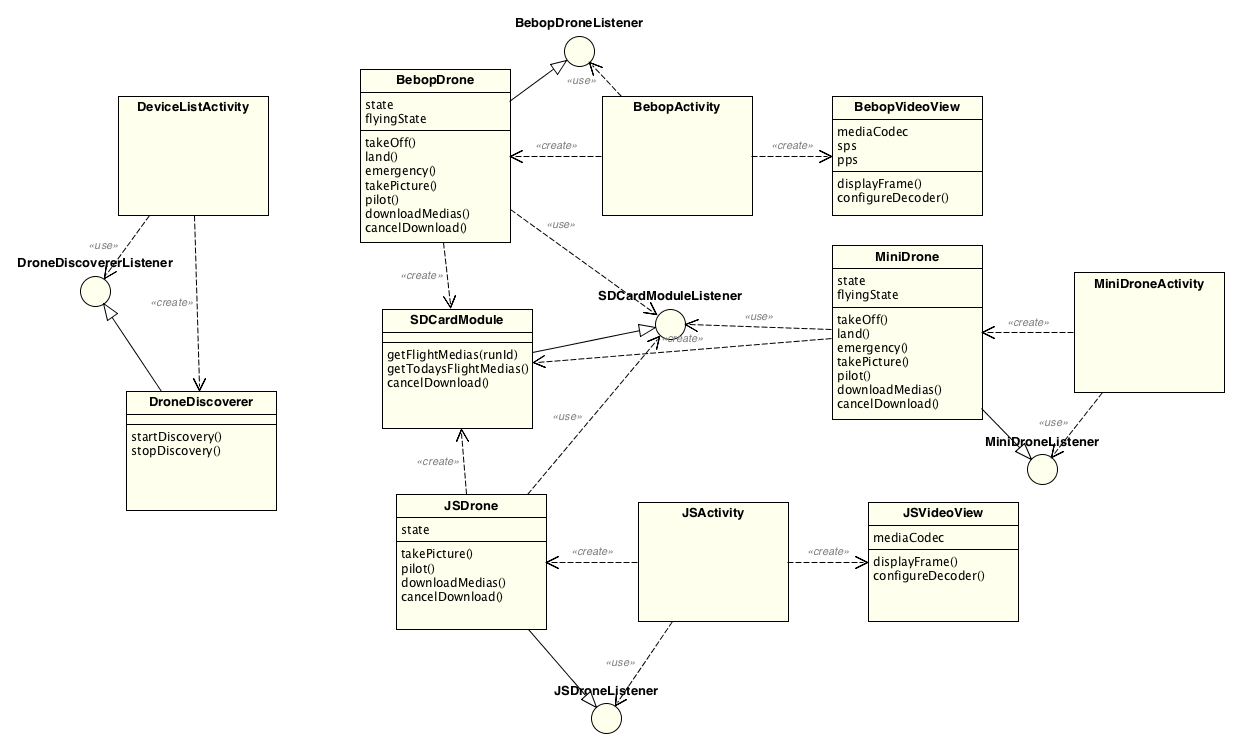This repo contains sample files to show you how to use the SDK.
The mobile samples use the following architecture:

They are standalone, this means that you can clone this repo and use them without compiling the SDK. To enable this, they will use the precompiled SDK libraries.
The mobile samples show you how to connect, pilot, take pictures, display video stream if available, and download medias from the drone.
They support the following drones:
- Bebop 2
- Bebop
- JumpingSumo
- Jumping Race
- Jumping Night
- MiniDrone Rolling Spider
- Airborne Cargo
- Airborne Night
What if you want to only build an app for the Bebop? Simply delete other files than
- DeviceListActivity
- DroneDiscoverer
- BebopActivity
- BebopVideoView
- BebopDrone
- SDCardModule
Use the precompiled SDK (hosted on Github):
Use the buildWithPrecompiledSDK configuration to use the precompiled libraries. (Scheme->Edit Scheme
Use your own compiled SDK:
Use the buildWithLocalSDK configuration to use the precompiled libraries.
Use the precompiled SDK (hosted on JCenter):
With Android Studio, open the settings.gradle located in SDKSample/buildWithPrecompiledSDK.
Use your own compiled SDK:
You can build this sample with Alchemy. In your <SDK> execute this command:
./build.sh -p android-forall -t build-sample
Otherwise, if you want to use Android Studio build, first execute this command in <SDK>:
./build.sh -p android-forall -t build-sample-jni
Then, in Android Studio, open the settings.gradle located in SDKSample/buildWithLocalSDK.
This example enables you to connect to a JumpingSumo and send and receive commands to pilot it and get its battery level. It also receives the video stream.
It uses the new and simplified API (ARController)
This example enables you to connect to a JumpingSumo and receive the video stream. Two options are available : either display the stream (using ffplay) or store frames on the file system.
This example enables you to connect to a Bebop drone and receive the h264 video stream.
This example enables you to connect to a Bebop, send commands to pilot it, receive the h264 video stream, decode it, and display this decoded stream.
Contributions from external developers are located in the Contributions folder, then sorted again by OS.
The name of the contributors/authors for each samples are written in the Contributions/CONTRIBUTORS.txt file.